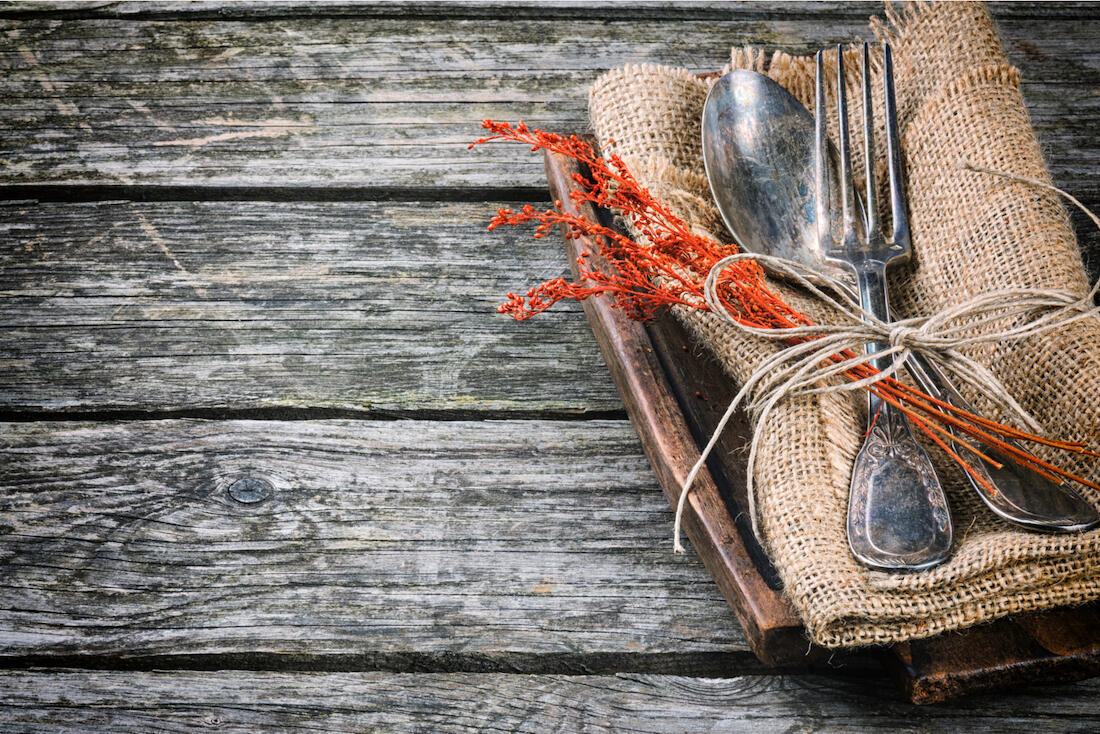You’ve got the basics down: No elbows on the dinner table. Place your napkin in your lap, not your collar. Use your indoor voice.
But beyond the no-brainers, how do you create the perfect holiday meal atmosphere with some memorable place settings and special touches to make sure your guests wine and dine in style?
We sat down with UNLV’s own Mr. Manners — hospitality professor and etiquette expert Murray Mackenzie — to get the dish on holiday party do’s and don’ts based on his years of dining experience from around the globe.
Place Settings and Decor
One of the easiest ways to set the mood is with dazzling table decor.
Every host has their own style, choice of colors, and decorations to suit the occasion. Mackenzie says none of that matters as much as being mindful of overly elaborate centerpieces that force guests on opposite sides of the table to part a wall of flowers to see one another.

“Don’t clutter your table,” he says. “The meal is the most important thing that’s going to be placed on the table.”
Napkins don’t belong in wine glasses, Mackenzie added. And the rule of thumb with silverware is that guests always start from the outside and work their way in — meaning guests should theoretically be able to know the menu’s sequence with a simple glance at the cutlery.
With that said: Know your guests. While in the U.S., the salad usually comes first, in Italy the salad comes at the end of the meal to serve as a refresher. And in the United Kingdom, the salad is served alongside the main course.
Table Manners & Serving Etiquette
Between after-school tutoring, soccer practice, and a smorgasbord of other activities, many families don’t have time to eat together at the dinner table — creating an unfamiliarity with proper procedure for passing items, leaving the table, or even how to sit, Mackenzie says.
“I have Old World values and customs, and I think they still have a place today,” says Mackenzie, who has dined with everyone from royalty to residents of the Australian outback. “Table manners are vitally important if you’re going to work in the hospitality industry. And many companies incorporate a dining occasion into the interview process to watch you demonstrate your skills at the table because, if they hire you, this is how you’d represent their company.”
Here’s a quick tutorial on a few items that will set you up for success at the dinner table:
- Sitting. You should be perched upright — no slouching! — with two fists worth of space between your tummy and the table, so that you’re close enough for comfort but not so far that you drop food when moving it to your mouth or leave no room for other guests to squeeze by.
Another thing, says Mackenzie: “You always take the food to your mouth, not your mouth to the food. Bending your head down is a no-no.” - Dude, where’s my cup? When sitting at a round or long rectangular table, an easy tip for identifying your utensils versus your neighbor’s is to curve your thumb and forefinger on each hand into an OK symbol. The resulting letters will help you remember that “b” for bread and other food items are always on the left side, and “d” for drinks means water, wine, tea/coffee, and other liquids are always placed on a diner’s right.
- Bread and butter. Don’t cut your dinner roll in half with the knife. Rather, take a sizable piece of butter from the pat in the middle of the table and spread it on the side of your plate. “You can’t keep going back to the butter pat with your knife. You take enough that’s going to last you. That’s good etiquette,” Mackenzie says. As you break off small pieces of your roll, butter them by dipping your knife into your personal spread.
- Helping hand. Always pass to the right. And if someone asks for something, you don’t reach across and give it — you pass it around like a chain. Salt and pepper are always passed together. “They are like an item. They always go together. Even if they only ask for the salt, you always pass both,” Mackenzie says.
Courtesy rules the day: If a dish is going down the table that a guest has requested, you don’t stop and take some for yourself before passing it to them. You give it to them first. - Leaving the table. Headed to the restroom? First things first: Be discreet. “You don’t announce where you’re going,” says Mackenzie. “We know.” Place your napkin to the right of your plate or on the base of the chair — never hang it over your seat back.
- All done. While eating, place your cutlery apart from each other like two wings. But when you’re finished, the international science of dining says that you place your utensils together and put them at about 5 o’clock on your plate. “In this country, I’ve seen people cross them. That can be very frustrating for the waiter because they have to push them together to clear the plate so one doesn’t fall off,” Mackenzie says. “And for goodness sake, don’t ask your dining partners for their plates and stack the dishes.”
Rule of Thumb
The dying arts of table manners and etiquette remain important because, according to Mackenzie, they serve as a nod to our history and as a sign of respect.
“I’ve dined at many different events that require different levels of etiquette,” he says. “If you’re comfortable within whichever setting, it shows and you’ll be invited back.”
More On How to Impress Your Guests
Click this link for a list of Mackenzie's must-try holiday wine pairings.



